The Nintendo Switch 2 has finally arrived in the gaming world, bringing a wave of upgrades alongside a strong sense of familiarity for longtime fans of the console.
After spending the past day or so testing the console and building upon my hands-on experience in London, I can safely say some of the changes are vast improvements, but some—and I won't name names just yet—fall short of expectations. All of this will be covered in my complete Nintendo Switch 2 review.
Update: After spending more time with Switch 2, I've revised my thoughts a little. Stay tuned for further updates and more Switch 2 content here at Gfinity.
Design and Build Quality
The main thing to know about the Switch 2 is that it's bigger. The new 7.9" LCD (up from 6.2") provides significantly more screen real estate, but it does make the console feel slightly oversized for a true handheld gaming experience. To me, it feels almost too large to hold comfortably for extended periods.
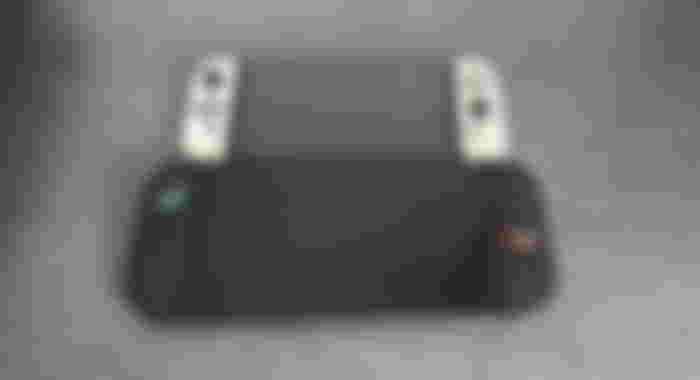
For instance, playing Fortnite in handheld mode for over an hour proved to be a bit of a struggle and ultimately uncomfortable. That said, this was probably done intentionally, as the bigger size is one of the new console's selling points, and the handheld ergonomics are something that will likely be addressed with a more compact Switch 2 Lite later down the road.
What’s impressive, though, is that the console is the same depth as the original, despite the upgrades. It’s also only slightly heavier, which does help if you're planning on long play sessions in handheld mode.

Design-wise, it’s a lot more understated than before. The Switch 2 features a matte black finish on both the Joy-Cons and the console, resulting in a sleeker, albeit less colorful, appearance compared to previous Switch iterations. However, there's no texture to the Joy-Cons at all, and so I found holding the device quite slippery at times—let's just say it's been dropped a few times...
The dock has also been upgraded. It matches the same matte black finish and includes rubber feet on the base. These do a good job of stopping the Switch 2 from sliding around on a desk or TV unit. It's worth noting, too, that docking the console is easy, with no noticeable friction or setup issues, although there’s still a bit of wiggle room once docked, just as with the original model. Just be careful when undocking the console, though, as it is easy to accidentally release a Joy-Con if you're holding it from either side.

One minor complaint I have about the overall design is that the HDMI and power cables could be made longer. They were fine for my setup, but if you’ve got a wall-mounted TV or a more spread-out setup, you’ll likely need a longer HDMI cable to make things work comfortably.
Having said all that, I would say Switch 2 looks and feels like an upgrade on the original, with very few elements, and I feel as though Nintendo has skimped on certain aspects to reduce production costs. However, that is just an overall takeaway—I go into more detail on how things, like the Joy-Cons, aren't perfect a little later on...
Display and Graphics
As mentioned, one of the most significant upgrades with the Switch 2 is the larger 1080p screen. The new display makes handheld gaming more immersive, and in my experience, it genuinely looks sharper and more vibrant than before. Games like Mario Kart World pop, especially when you're using the new HDR10 support.
I first saw the HDR in action at a hands-on event, and having now spent more time with it, I can say that HDR enhances the visual experience. With HDR turned on, games look brighter and visually more impressive, while turning it off leaves things feeling flat and dull by comparison.

As highlighted in many press releases, the Switch 2 also supports up to 4K at 60 frames per second. This is a bit of a revolution, as playing Mario Kart in 4K on a TV is an absolute delight. It’s one of the best-looking Nintendo experiences to date because of this, and, when docked, the Switch 2 does outshine previous Switch iterations.
However, let’s talk about the 120 fps support. Technically, the console supports a 120Hz output at 1080p and 1440p resolutions, but in reality, that’s not the experience gamers are getting currently, including me.
When I connected the console to my 180Hz monitor and turned on its frame rate counter, I found that most games—such as Mario Kart and Fortnite—are still locked to 60Hz. After a bit of digging online, it appears that the only title currently offering 120Hz is Welcome Tour, which costs $9.99/£7.99 and doesn’t come bundled with the console, despite essentially being an introduction to the Switch 2's features. I refuse to pay for what feels like a tech demo, so I haven’t been able to test the 120Hz output properly yet, and will likely only be able to when more 120Hz-supported games arrive in the future (supposedly, Metroid Prime 4: Beyond – Nintendo Switch 2 Edition)
One display feature I do appreciate, though, is Auto Low Latency Mode (ALLM), which automatically reduces input lag when connected to supported displays. The console also has Screen Burn-in Reduction, which is automatically enabled but can be toggled from the Display settings.
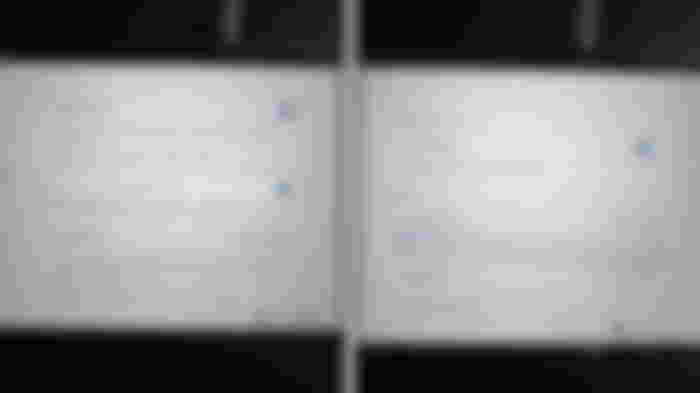
Now, everything I've said about the display so far is expected, with the only major issue being its current 120Hz support. However, the biggest problem with the Switch 2 is the lack of an OLED screen. Knowing Nintendo already has OLED tech from the eventual OLED Switch model, it’s disappointing that the base Switch 2 uses LCD again, especially for a next-gen console. It feels like a setup for another OLED upgrade later down the line, which doesn’t sit great with me. That said, OLED isn't for everyone—it comes with its issues, including burn-in, so having an LCD option may be better and even preferable for some. Still, I can’t help but feel like Nintendo left something on the table here, and I've noticed holding things back seems to be a bit of a theme with the Switch 2...
Lastly, the screen has a pretty big glare problem. Even in modest lighting, the reflection can be distracting and difficult to manage. I imagine that playing on a train or in a location with constantly changing light would be frustrating, and so an anti-glare coating would have gone a long way in improving the handheld experience.
Performance and Hardware Upgrades
One of the key upgrades in the Switch 2 is the bump to 256GB of system storage, which is a welcome improvement over the original. However, it's still not quite enough for today’s larger game files. For example, Mario Kart World is around 10GB bigger than Mario Kart 8 Deluxe, and if you're someone who likes to keep a bunch of games installed at once, you’ll need to invest in the high-speed Express Micro SD card. This adds to the overall cost of the console, and yet it will become essential once the file size of Switch 2 games inevitably increases.
On the plus side, the storage system itself is noticeably faster. Load times do appear to be significantly quicker across the board, which is a huge win. Let's face it, no one wants to sit around waiting to launch games anymore, and now you don’t have to.
In terms of gameplay, things feel smoother. As mentioned earlier, games run quicker and in more detail now, thanks to its bigger, higher-resolution screen. Part of this improvement is also due to the console's new NVIDIA processor. Additionally, it's worth noting that the Switch 2 now features 12GB of RAM in total, which will undoubtedly contribute to further gameplay improvements. However, I did notice the console getting warm, even playing Mario Kart World for an hour or so. The same applies to the dock, despite the new cooling fan supposedly keeping heat build-up at bay.
Moving on to the surprisingly solid built-in speakers. They manage to deliver clear in-game sound and party chat audio without distortion, which isn’t something you could always say about the original model. However, the mic on the console itself is a major letdown. I experienced a horrible echo in party chat, which resulted in me either muting the mic completely or using a headset to communicate with friends.
Joy-Con and Controller Improvements
Out of everything on the Switch 2, the Joy-Cons have probably had the most noticeable upgrades overall. Firstly, they’re larger, which makes a significant difference in how they feel in-hand, offering a much more comfortable experience, especially during longer play sessions.
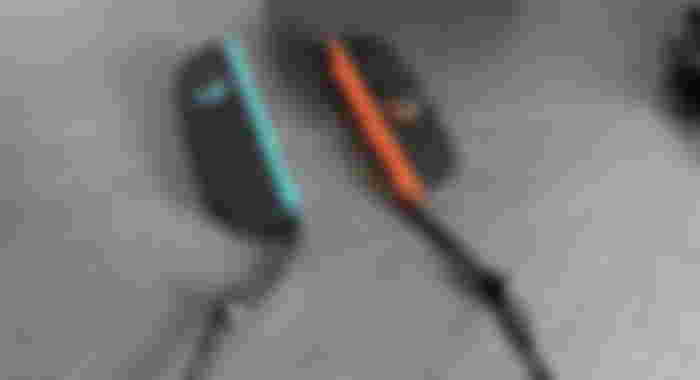
One of the most significant design changes is the introduction of a new magnetic connection system, replacing the old slide-in rails. It’s a clean and satisfying system, and I liked the visual pop-up effect that appears on each side of the screen when you connect a Joy-Con. While I did run into an issue detaching one of the Joy-Cons during my hands-on experience in London, I’ve had no problems since receiving my unit. The two back release buttons are easily accessible and pressable, making it straightforward to disconnect the Joy-Cons.
That said, I do have some concerns about the long-term durability of this new system. The prongs that connect to the console are relatively thin. Although they are partially recessed into the console's body for protection, they still appear to be susceptible to damage over time. However, this is purely speculative at this stage, as I have only had the console for a short time.

One interesting new feature is the ability to use the Joy-Cons like a mouse. I tested this at the London event and was genuinely impressed with how they operated, even working smoothly on my jeans on the day, meaning you're not limited to using them on a flat desk. At home, performances have been slightly less fluid when navigating the menus, but it’s still a unique addition overall, and one that unlocks new potential for PC Switch 2 gaming in the future. Just a heads-up, though: using the Joy-Cons this way might attract dust or dirt, even with the included wrist strap attachments helping to keep them off surfaces.
Speaking of the wrist straps, they connect easily and can now be used either way, with + and – symbols on both sides. However, I’m not a fan of the new SL/SR buttons. Unlike the older strap-based versions, which protruded and provided clear tactile feedback, the new ones are almost flush with the surface, with very little texture or feel, making them harder to locate and press with confidence.
The thumbsticks feel better, overall, offering smoother, softer, and more precise control, which makes a difference in games that require fine control. Maybe this was a placebo, but they felt great to use, even though they lack Hall Effect technology. Considering so many controllers feature this these days, this is a disappointing omission. However, it appears that Nintendo will replace faulty Joy-Cons for free, which alleviates some concerns over the longevity of the Joy-Cons and their thumbsticks.
Another addition is the new ‘C’ button, which gives you quick access to GameChat—I’ll go into that in more detail later, but it’s a handy inclusion. Additionally, the controller accessory remains essentially unchanged, so there is not much to report there.
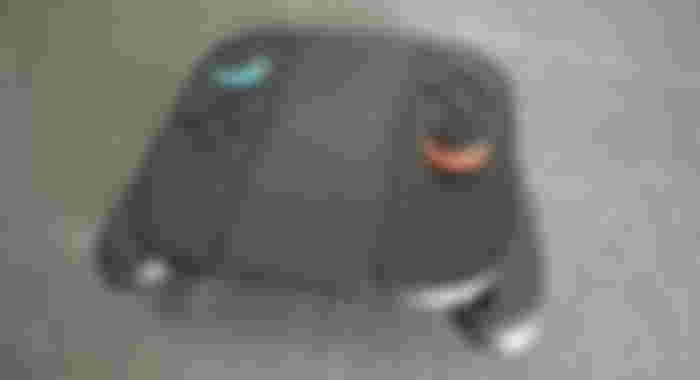
Gyro controls are still present, and I mainly tested them with tilt steering in Mario Kart World. As with previous Switch models, they work, but they’re far from perfect. I’ve always found gyro steering a bit tricky and not as accurate as it needs to be, so I generally stick to thumbsticks. I haven’t tried it yet in more motion-focused games like Switch Sports, so time will tell if there’s any improvement there.
Online Features and Connectivity
The Switch 2 brings some welcome upgrades in the connectivity department. It now supports Wi-Fi 6, alongside a returning Bluetooth, which I had no issues pairing with my Skullcandy Crush Evo headphones, and NFC support (amiibos remain!).
While it’s hard to measure Wi-Fi performance exactly (since so much depends on your internet setup), online gameplay feels quicker and smoother than before. For context, I have average to good Wi-Fi, and I was pleasantly surprised at the speed at which I connected to Fortnite lobbies, as I've experienced original Switch consoles to be notoriously slow at this in the past.
I'd also say lag was minimal. In fact, I’d say I experienced less lag playing Fortnite on the Switch 2 than on my PS5, which says a lot. One slight downside, though, is that the Switch 2 doesn't automatically switch to a Wi-Fi extender when moving around the house, as a friend of mine at Gfinity mentioned. You must manually reconnect through network settings, which can be annoying if you rely on extenders.
Moving on to Joy-Con pairing, which I found to be lightning fast. I also noticed no real input delay, which is a major plus. You also now have GameChat, which, as mentioned before, lets you voice chat with friends, albeit with Switch 2 users only.
Before you enter a GameChat, I was pleased to find that you are met with some options. You can toggle your mic, share your screen, and flip between having your camera on or off. However, there are still a few drawbacks here. For one, you need to link your phone number to your Nintendo account to use it, which feels unnecessary. However, I do appreciate the fact that you must manually approve friends for them to join or be invited to your GameChat session. Also, note that GameChat is only free until March 31, 2026. After that, you’ll need a Nintendo Switch Online subscription, even for games that don’t usually require it, which is a bit of a catch, I must say.
Battery Life and Portability
The battery life on the Switch 2 isn’t anything to write home about, at least not initially for me. Nintendo says you’ll get around 2 to 6.5 hours, but during my first full charge, I only managed about an hour and a half of playing Fortnite before it indicated that the battery was low. That said, this seemed to be a one-off, possibly down to a partial charge, because after a second full recharge, it lasted much longer when playing both Mario Kart and Fortnite.
Battery performance appears to vary significantly depending on your output resolution, screen brightness, and the game's demand. Still, it doesn’t feel like a significant upgrade over the original Switch, and its battery life is not as good as the OLED model’s, based on both my experience and Nintendo’s own claims, despite having some battery-saving features like Auto Sleep.
A final point on the battery is that the charging time remains unchanged. Nintendo states that it takes about 3 hours for a full charge, which aligns with my own experience.
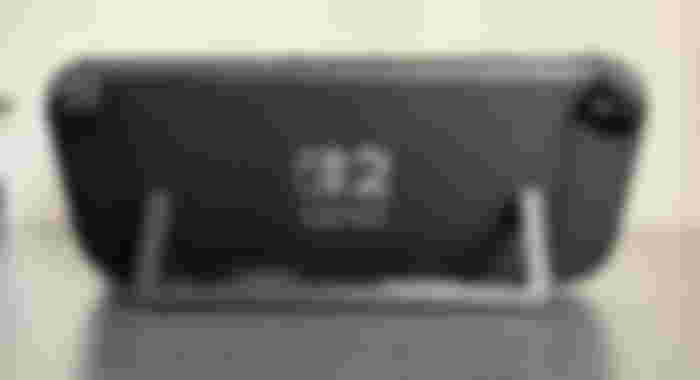
On the portability side, the larger form factor makes it less travel-friendly, but there are some improvements. The new full-width, flip-out stand is a significant improvement over the flimsy single-arm version on the original Switch. It’s sturdy and wide enough to comfortably support tabletop gaming, which is great if you’re playing on the go without a TV.
Despite its bigger size, it’s only slightly heavier than the original, with the minor weight difference not even noticeable in-hand. But because of that increase in size, it's not as portable as the last Switch, and you’ll definitely want a decent protective case if you’re planning to take it out and about.
User Interface
The user interface on the Switch 2 feels smoother and just generally nicer to navigate than before. It’s not a massive overhaul compared to the original, but the minor tweaks Nintendo has made do make a difference.
One thing I noticed right away was the subtle gradient ring around whichever module you’re hovering over. It’s a small touch, but it makes the home menu feel a little brighter and more modern.
Like before, you can toggle between a light and dark theme for the menus. I went straight to dark mode, as I often do when I can, as I find it easier on the eyes, especially during longer sessions or late-night gaming.

Everything is still clean and intuitive. Nintendo hasn’t overcomplicated things or added unnecessary fluff, which is a good thing. They’ve refined what was already there, and the settings menu felt well-organized to match. I easily found the options for display resolution and toggling HDR, which meant I spent more time with Mario than navigating menus.
Price and Value
The Nintendo Switch 2 comes in at £395.99 / $449.99, which, frankly, feels a bit steep for what you’re getting at launch. While it’s technically a next-gen console, it really feels more like a "Switch 1.5"—an iterative upgrade rather than a true leap forward.
That price tag stings even more when you consider there are no free games included, not even a bundled title like the original Wii Sports with the Wii, or the new Welcome Tour, which, as touched on already, is just an intro to the console, acting as the Switch 2’s version of the PS5's ASTRO’s Playroom). That game will cost you $9.99 / £7.99, and it really should’ve been included to show off the console’s features.
I'd say the "real" Switch 2 will arrive if an OLED model comes out in the future, at which point I'd argue it might be a better value console. Plus, if you’re planning on downloading a decent number of games, the 256GB of internal storage won’t last long, especially with titles like Mario Kart World taking up significantly more space than their predecessors. You’ll likely need to buy a micro SD card, which adds to the overall cost pretty quickly.
Then there are the accessories. Both the Switch 2 Camera ($54.99 / £49.99) and the Switch 2 Pro Controller ($84.99 / £74.99) come at a premium, and in my opinion, are a bit overpriced for what they offer.
Yes, the console is cheaper than, say, an ASUS ROG Ally, but you're more pigeon-holed into the Nintendo ecosystem with a Switch 2. And while bundle deals certainly make the price tag more palatable, even though you're spending more, I would still say the console seems a bit overpriced, considering it's clearly not the finished article and requires a multitude of costly accessories to unlock its full functionality.
Comparison to the Original Switch
To make things easier, here's a table of some of my key findings:
Category | Nintendo Switch 2 | Original Nintendo Switch | Key Findings / Comments |
|---|---|---|---|
Display | 7.9" LCD, 1080p, HDR10, 120Hz support (limited) | 6.2" LCD, 720p, no HDR, no 120Hz | Sharper and more immersive, but 120Hz support is mostly unutilized as it stands, and lack of OLED is a letdown |
Joy-Cons | Bigger, magnetic connection, improved thumbsticks, “C” button for GameChat, mouse-mode supported | Smaller, rail connection, known drift issues | Major upgrade but no Hall Effect sensors, and flush SR/SL buttons are less tactile |
Performance | Faster load times, smoother gameplay, 12GB RAM, new NVIDIA processor | Slower overall performance, 4GB RAM | Feels smoother and snappier; noticeable speed increase in games like Mario Kart World |
Storage | 256GB internal | 32GB internal (standard model) | Big improvement, but still not enough for multiple large titles—micro SD still needed |
Online & Connectivity | Wi-Fi 6, faster online speeds, Bluetooth, GameChat with camera, NFC support | Wi-Fi 5, typically slower to join online lobbies | GameChat is a nice addition but limited to Switch 2 users, phone number required, and you will need Online to use it eventually |
Battery Life | 2 to 6.5 hours | 2.5 to 6.5 hours (base model), better in OLED | No real battery upgrade, charging remains 3 hours, screen brightness impacts battery among other performance-based elements |
Final Verdict
The Nintendo Switch 2 is a solid but imperfect upgrade that ultimately feels more like a "Switch 1.5" than a true next-generation console. Nintendo has made improvements for sure: the larger 7.9" screen offers a more immersive handheld experience, the 1080p resolution and HDR10 support elevate visuals, and the new NVIDIA chip and 12GB of RAM ensure games run more smoothly than ever. Yet despite these positives, there's a lingering sense that the Switch 2 is holding back, perhaps to leave room for future iterations.
Several design and hardware decisions feel like half-measures. The lack of an OLED screen is a glaring omission, especially when an OLED variant already exists for the previous model. The LCD screen suffers from noticeable glare, and while 120Hz is technically supported, the number of games that currently utilize it is few and far between. Additionally, the base storage is better but still insufficient, battery life remains average, and the price point feels a little high.
In short, the Switch 2 feels more like a stepping stone than a destination, with it being an upgrade that hints at what’s next rather than fully embracing the next generation.




